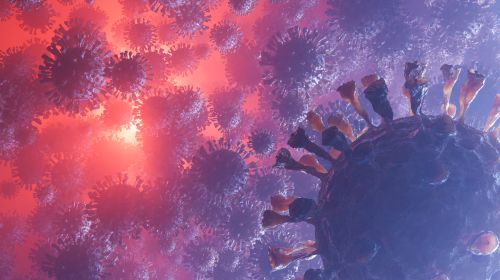Despite the development of safe and effective vaccines, effective treatments for COVID-19 disease are still urgently needed. Several antiviral drugs have shown to be effective in reducing progression of COVID-19 disease.
In the study by Matrajt, et al. (2022), the researchers used an agent-based mathematical model to assess the potential population impact of the use of antiviral treatments in four countries with different demographic structure and current levels of vaccination coverage: Kenya, Mexico, United States and Belgium. They analyzed antiviral effects on reducing hospitalization and death, and potential antiviral effects on reducing transmission. For each country, they varied daily treatment initiation rate (DTIR) and antiviral effect in reducing transmission (AVT).
Irrespective of location and AVT, widespread antiviral treatment of symptomatic adult infections (20% DTIR) prevented the majority of COVID-19 deaths, and recruiting 6% of all adult symptomatic infections daily reduced mortality by over 20% in all countries. Furthermore, the researchers' model projected that targeting antiviral treatment to the oldest age group (65 years old and older, DTIR of 20%) can prevent over 30% of deaths. The researchers say their results suggest that early antiviral treatment (as soon as possible after inception of infection) is needed to mitigate transmission, preventing 50% more infections compared to late treatment (started 3 to 5 days after symptoms onset). They add the results highlight the synergistic effect of vaccination and antiviral treatment: as the vaccination rate increases, antivirals have a larger relative impact on population transmission. Finally, the model projects that even in highly vaccinated populations, adding antiviral treatment can be extremely helpful to mitigate COVID-19 deaths.
Reference: Matrajt L, et al. Could widespread use of antiviral treatment curb the COVID-19 pandemic? A modeling study. BMC Infectious Diseases. Vol. 22, article number 683. (2022)
